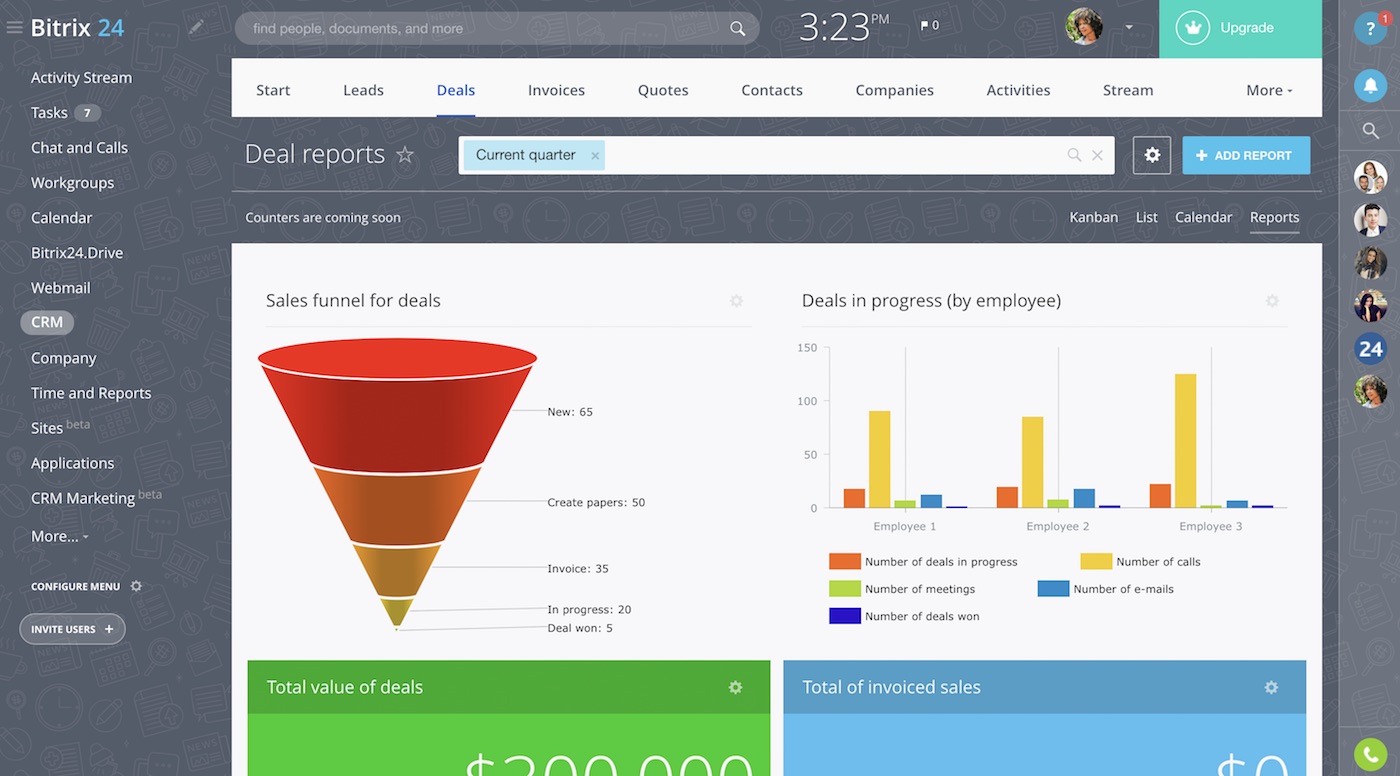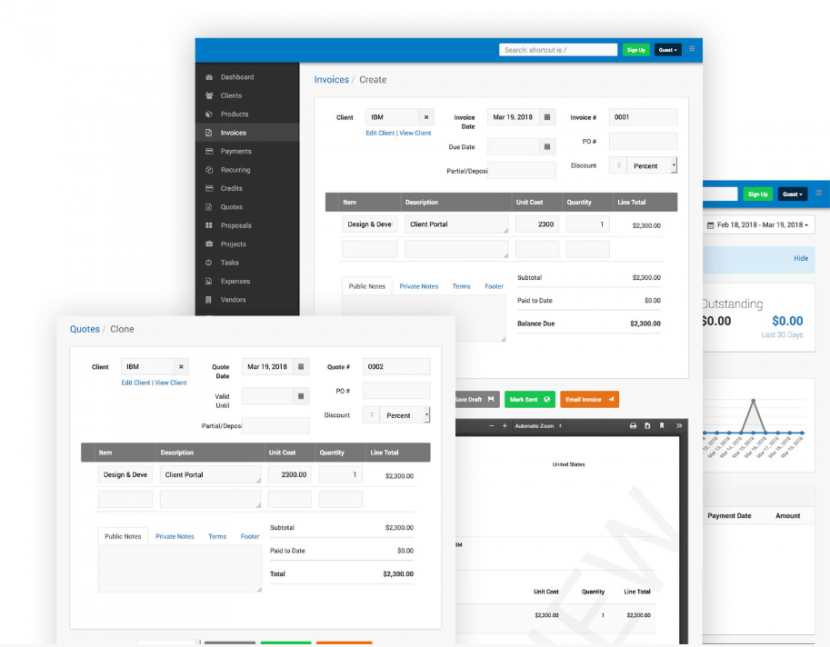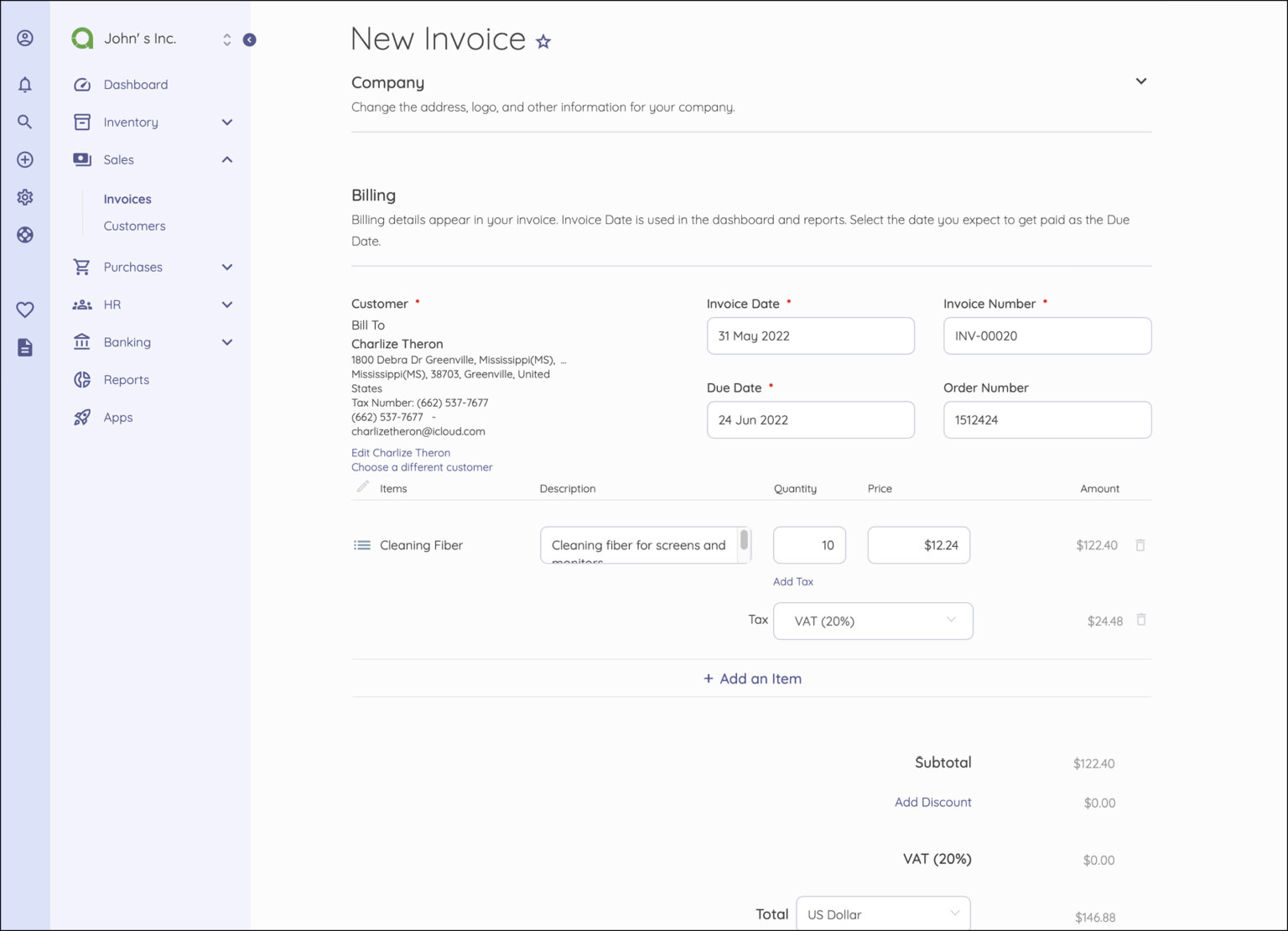Crm and invoicing software – In the competitive business landscape, efficiency and organization are paramount. CRM (Customer Relationship Management) and invoicing software offer a powerful solution, enabling businesses to manage customer interactions and streamline billing processes seamlessly. With these tools, businesses can elevate their operations, enhance customer satisfaction, and drive growth.
CRM software empowers businesses to centralize customer data, track interactions, and nurture relationships. Invoicing software automates invoice creation, streamlines payment processing, and provides real-time insights into financial performance. By integrating CRM and invoicing software, businesses can gain a comprehensive view of their customers, streamline operations, and make data-driven decisions.
Features of CRM and Invoicing Software

CRM and invoicing software are two essential tools for businesses of all sizes. CRM software helps businesses manage their customer relationships, while invoicing software helps them track and manage their invoices.
When these two types of software are integrated, they can provide businesses with a powerful tool for managing their customer relationships and finances.
Core Features of CRM Software
CRM software typically includes the following core features:
- Contact management: CRM software allows businesses to store and manage contact information for their customers, leads, and partners.
- Sales tracking: CRM software helps businesses track their sales pipeline and identify opportunities for growth.
- Marketing automation: CRM software can be used to automate marketing campaigns and track their effectiveness.
- Customer support: CRM software can help businesses provide customer support and track customer interactions.
Essential Features of Invoicing Software
Invoicing software typically includes the following essential features:
- Invoice creation: Invoicing software allows businesses to create and send invoices to their customers.
- Payment tracking: Invoicing software helps businesses track payments and identify overdue invoices.
- Reporting: Invoicing software can generate reports on sales, invoices, and payments.
- Integration with other software: Invoicing software can be integrated with other business software, such as CRM software and accounting software.
Integration of CRM and Invoicing Software
When CRM and invoicing software are integrated, they can provide businesses with a number of benefits, including:
- Improved customer relationship management: By integrating CRM and invoicing software, businesses can get a complete view of their customer relationships, including their sales history and payment history.
- Increased efficiency: Integration can help businesses streamline their invoicing process and reduce the time it takes to create and send invoices.
- Improved cash flow: Integration can help businesses improve their cash flow by providing them with real-time visibility into their accounts receivable.
Benefits of Using CRM and Invoicing Software

Incorporating CRM and invoicing software into business operations offers numerous advantages, streamlining processes and enhancing overall efficiency.
CRM software empowers businesses to manage customer relationships effectively, while invoicing software simplifies the billing process. Together, these tools provide a comprehensive solution for businesses looking to optimize their operations.
Advantages of CRM Software
- Improved Customer Relationship Management:CRM software provides a centralized platform for managing customer interactions, tracking their history, preferences, and communication.
- Enhanced Sales Productivity:By automating tasks such as lead generation, scheduling appointments, and tracking sales pipelines, CRM software helps sales teams work more efficiently and close deals faster.
- Better Customer Service:CRM software empowers customer service teams with instant access to customer information, enabling them to resolve issues quickly and provide personalized support.
- Increased Customer Satisfaction:By delivering exceptional customer experiences, CRM software helps businesses build stronger relationships with their customers, leading to increased satisfaction and loyalty.
Benefits of Invoicing Software
- Streamlined Billing Process:Invoicing software automates the invoice creation and delivery process, reducing manual errors and saving time.
- Accurate and Consistent Invoices:The software ensures that invoices are accurate, consistent, and compliant with legal requirements, reducing the risk of disputes.
- Improved Cash Flow Management:Invoicing software provides real-time visibility into outstanding invoices and payments, enabling businesses to manage their cash flow effectively.
- Reduced Administrative Costs:By automating invoicing tasks, businesses can reduce the need for administrative staff, lowering operating costs.
How CRM and Invoicing Software Enhance Business Efficiency
When integrated, CRM and invoicing software create a powerful combination that enhances business efficiency in multiple ways:
- Automated Workflows:The integration of these tools automates workflows between sales, customer service, and finance teams, reducing manual tasks and improving communication.
- Centralized Data Management:All customer and invoice-related data is stored in a central location, eliminating data silos and ensuring data accuracy.
- Improved Collaboration:The integration fosters collaboration between different departments, enabling teams to access and share information seamlessly.
- Enhanced Reporting and Analytics:The combined data from CRM and invoicing software provides valuable insights into customer behavior, sales performance, and financial metrics, enabling data-driven decision-making.
Choosing the Right CRM and Invoicing Software
Choosing the right CRM and invoicing software is crucial for businesses to streamline their operations and improve efficiency. When selecting CRM software, key factors to consider include:
Business needs
Determine the specific requirements of your business, such as managing customer relationships, tracking sales pipelines, or automating marketing campaigns.
Integration
Consider how the CRM software will integrate with your existing systems, such as accounting software, email marketing platforms, or project management tools.
User experience
Ensure the software is user-friendly, intuitive, and easy to navigate for all users.
Scalability
Choose software that can grow with your business and support your future needs.
Support
Evaluate the level of customer support provided by the software vendor, including technical assistance, training, and documentation.When choosing invoicing software, consider the following criteria:
Features
Look for software that offers essential features such as invoice creation, payment processing, tax calculations, and reporting.
Automation
Choose software that automates repetitive tasks, such as sending invoices, tracking payments, and generating reports.
Customization
Ensure the software allows you to customize invoices, add your company logo and branding, and set up payment terms that suit your business.
Integration
Consider how the invoicing software will integrate with your CRM software or other business systems.
Pricing
Compare the pricing models of different software options to find one that fits your budget and business size.To evaluate and compare CRM and invoicing software options, follow these tips:
Create a list of requirements
Artikel the specific features and functionalities you need in the software.
Research different options
Explore various software vendors and read reviews from other users.
Request demos
Schedule demos with potential vendors to see the software in action and ask questions.
Get references
Ask for references from other businesses that have used the software and can provide feedback.
Consider the long-term cost
Evaluate the total cost of ownership, including software licensing, implementation, and ongoing support.
Implementation and Best Practices

Effective implementation of CRM and invoicing software is crucial for optimizing its benefits. Here’s a comprehensive guide and best practices to ensure successful implementation and maximize its potential.
A well-executed implementation plan and adherence to best practices will enhance the software’s efficiency, streamline workflows, and improve overall productivity.
Step-by-Step Implementation Guide
- Define Goals and Objectives:Clearly Artikel the desired outcomes and objectives for implementing the software.
- Gather Requirements:Determine the specific needs and requirements of your business and users.
- Select a Vendor and Software:Evaluate and compare different vendors and software options based on your requirements.
- Configure and Customize:Set up the software according to your business processes and workflows.
- Train Users:Provide comprehensive training to ensure users understand and can effectively utilize the software.
- Integrate with Existing Systems:Connect the CRM and invoicing software with other relevant systems, such as accounting or marketing.
- Monitor and Evaluate:Track key metrics and user feedback to assess the software’s performance and identify areas for improvement.
Best Practices for Effective Use
- Maintain Data Accuracy:Ensure that customer and transaction data is accurate and up-to-date.
- Automate Workflows:Utilize automation features to streamline tasks, such as sending invoices or following up with leads.
- Foster User Adoption:Encourage user buy-in and provide ongoing support to ensure the software is fully utilized.
- Track Key Metrics:Monitor key performance indicators (KPIs) to measure the software’s impact and identify areas for improvement.
- Regularly Update and Maintain:Keep the software up-to-date with the latest releases and security patches.
- CRM and ERP integration:A manufacturing company integrated its CRM with its ERP system to streamline order processing. The integration automated the flow of customer orders from the CRM to the ERP, reducing errors and speeding up order fulfillment.
- CRM and marketing automation integration:A software company integrated its CRM with its marketing automation platform to track customer interactions across channels. The integration provided insights into customer behavior and helped the company personalize marketing campaigns.
Implementation Methods Comparison, Crm and invoicing software
| Implementation Method | Pros | Cons |
|---|---|---|
| In-House: | – Greater control over implementation | – Higher upfront costs |
| Cloud-Based: | – Lower upfront costs | – Less control over data |
| Hybrid: | – Combines benefits of both methods | – More complex to implement |
Integration with Other Business Systems
Integrating CRM and invoicing software with other business systems is crucial for streamlining operations and improving efficiency. It enables seamless data flow, eliminates manual data entry, and provides a comprehensive view of customer interactions and financial transactions.
One critical integration is with accounting systems. CRM and invoicing software can be integrated with accounting systems to automate invoice creation, payment processing, and financial reporting. This integration ensures that invoices are generated accurately, payments are recorded promptly, and financial data is synchronized across systems.
Successful Integrations
Final Wrap-Up

CRM and invoicing software are indispensable tools for businesses seeking to optimize their operations, enhance customer experiences, and achieve sustainable growth. By leveraging these powerful solutions, businesses can gain a competitive edge, drive efficiency, and unlock new opportunities for success.